Watches with original and unaltered dials are worth significantly more than those with repainted or refurbished dials. Actually, in most cases it is always better to leave the old dial in "as is" condition than to undertake any restoration at all.
Today, I acquired a lovely 1957 Omega Constellation, for my personal collection. It is an all original example in a handsome 18K gold case.
However the dial itself was a shocker! It was covered with some kind of fluff which over time had 'glued' itself to the dials lacquer. The watch spent 25 years in a deposit box and has now reached a stage where any attempt to remove the fluff would cause further damage.
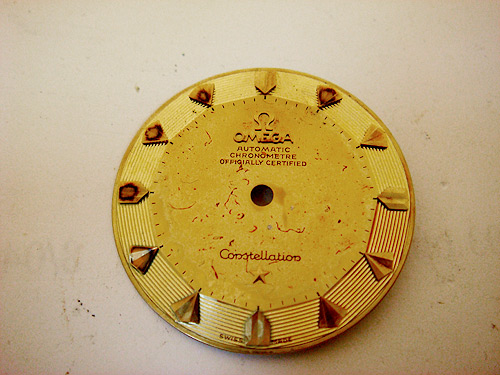
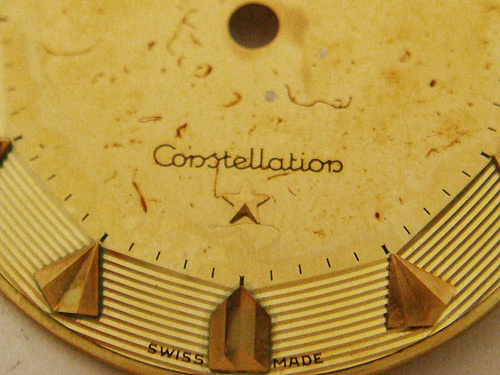
Obviously finding a new dial would be impossible and sending it to Switzerland for restoration would be a lengthy and expensive undertaking with a dubious result.
After some closer examination, I decided to take the risk and clean the dial. I felt that with a bit of luck, some mild cleaning liquid would dilute the gunk to the point where the fluff could be removed without removing the lacquer and lettering. A risky and nerve-racking operation indeed!
The end result was way beyond my expectation. With the help of a fine-hair paint brush, the dial cleaned nicely. The fluff was softened, then removed and finally the Constellation dial revealed itself in its full glory. Not a single letter or bit of lacquer was removed / lost in the process!
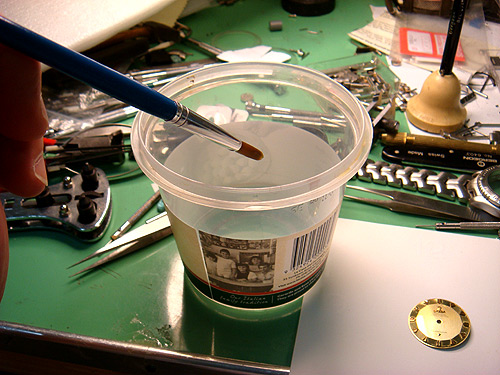
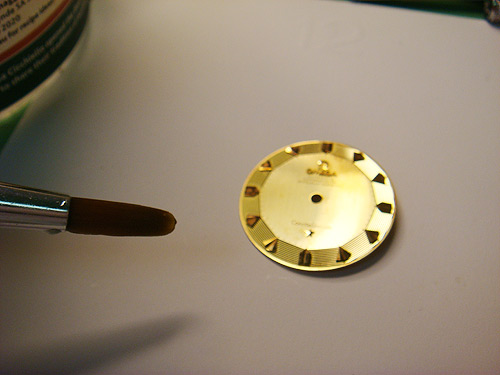
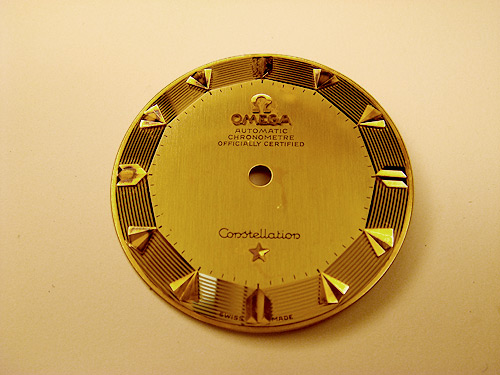
So, what was the mysterious cleaning liquid you wonder? Send me an email and I would be more than happy to share the secret with you.
Of course, the full credit for this 'restoration’ goes to maker of this magnificent 1957 Omega pie-pan dial. What a beauty!
No comments:
Post a Comment